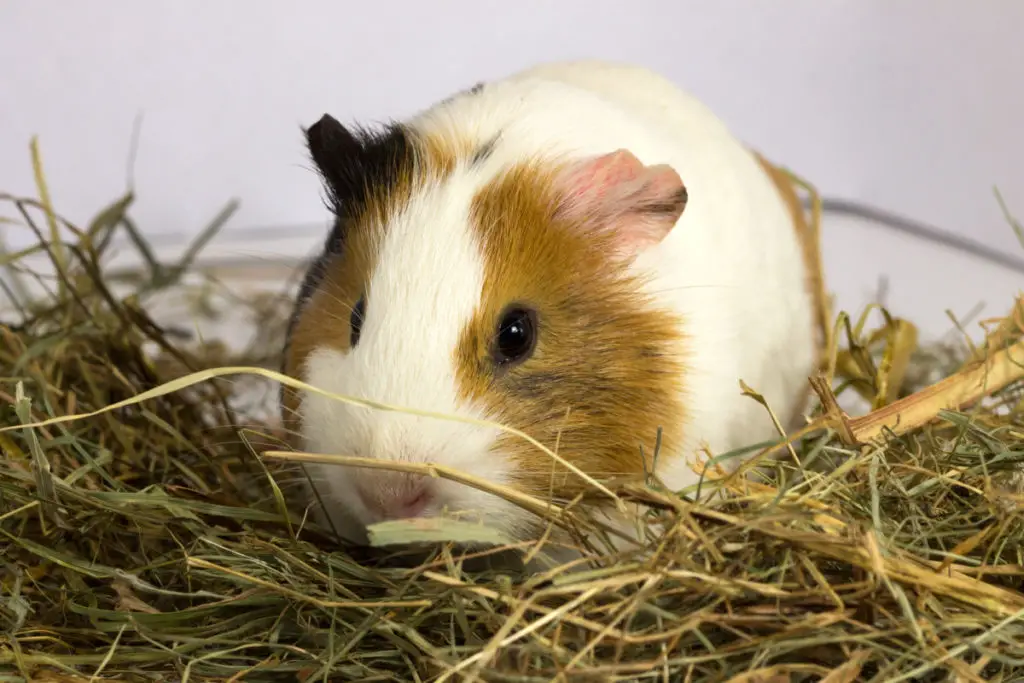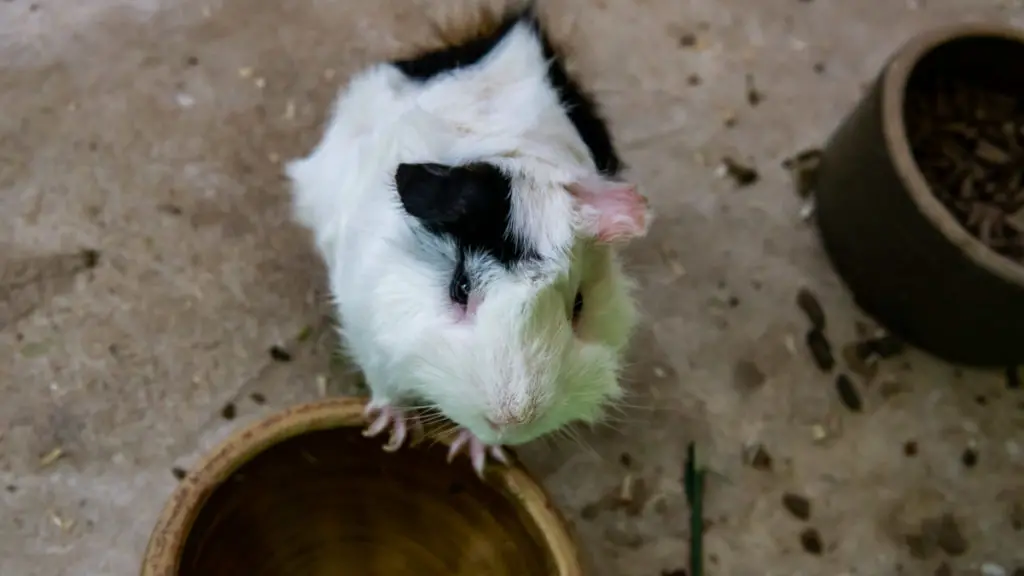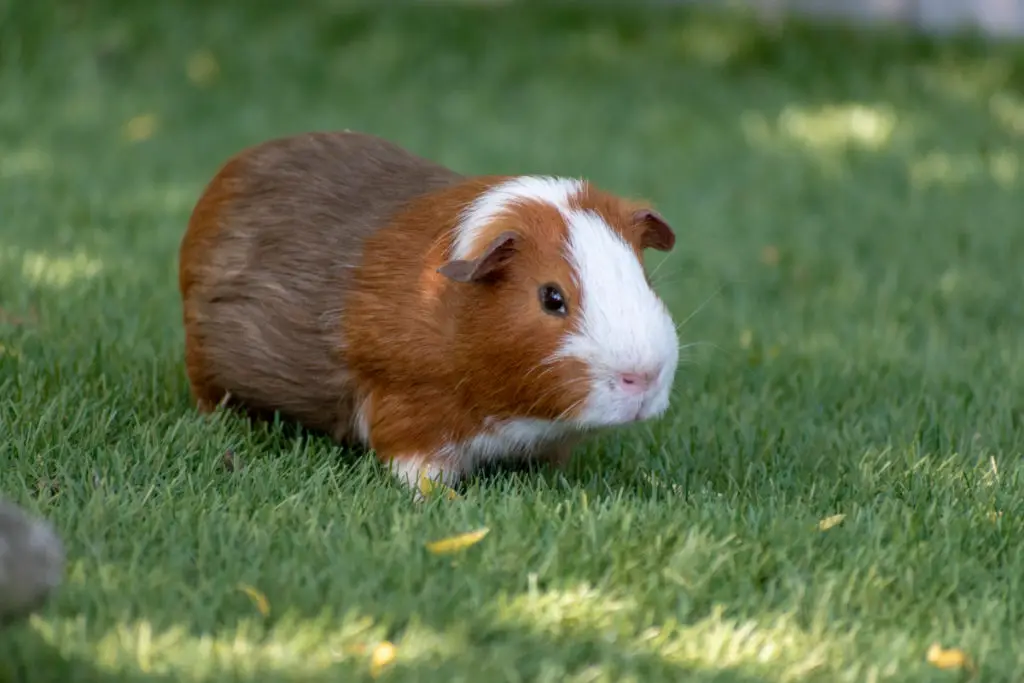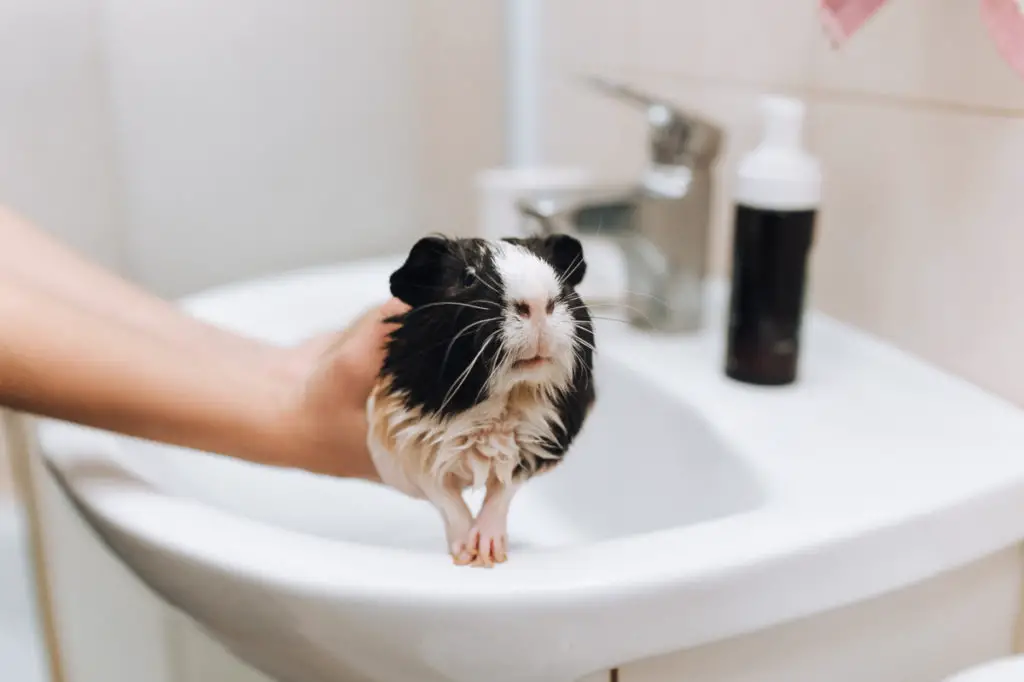How Much Do Guinea Pigs Weigh? Weigh In 2 Easy Ways
How much do guinea pigs weigh? Baby guinea pigs weigh around 100 grams at birth. Cavies can reach their adult weight when they come to the age of about eight months old.
Here’s what you should take note of as a pet owner:

It would be best if you track your pet’s weight after bringing it home from a store; for sure, its health is undoubtedly your number one priority (and sometimes it is manifested by its weight).
A maintained weight is needed for your guinea pig to grow healthy and alarm you if it is gradually becoming overweight.

Remember, obesity is very common. Your pet may be suffering from some health problems, and you can prevent unwanted events from happening if you regularly check its weight.
In this article, we will discuss the proper weight of a guinea so that you can be aware of whether your pet is underweight or not.
So without any more delays, let us dive into it!
Caring About Guinea Pig’s Weight
The question is:
Why do you need to care about your pet’s weight?
That can be answered quickly because the guinea pigs’ weight is the primary indicator of their well-being.
You must monitor your pet’s weight because, by that, you can see how it develops over time.
Besides, you can benefit from spotting unusual changes that may be inappropriate to your cavy’s growth.
At various ages, you can have the advantage of monitoring the normality of their health.
Guinea Pig’s Normal Weight

We’ll answer your question: How much do guinea pigs weigh?
In this part of the article, you can have enough knowledge about the proper weight of a cavy during its growth.
Make sure to note every detail to track if there are unusual changes in its body, causing harm.
During growth
During the time where the guinea pig is reaching its maturity, its weight and size also is abruptly increasing and in a consistent manner.
Specifically speaking, the increase will go about thirty to fifty grams per week.
When guinea pigs gradually achieve maturity and adulthood, their weight will soon decrease and stop somewhere on the timeline of twelve to fourteen months.
You may also notice that the male cavy can gain more weight than the female ones, and you do not have to worry because it is entirely normal.
At maturity
When your guinea pig has successfully reached the maximum maturity level, it should weigh around 900 to 1200 grams if it is a male and 700 to 900 grams if female.
However, it is not precisely in this range since there are significant factors like breeding that affect growth.
If you notice that the deviation on the range is high, you need to consult the veterinarian because there may be some issues that can cause your pet to be in danger.
Do not wait for a long time because your cavy’s health should be your top priority to avoid regrets in the future.
How To Monitor The Weight Of A Guinea Pig?

There are specific ways in which you can check and monitor the weight of your tailless rodent.
I will teach you some of it so that you can still weigh your pet even at home.
Step #1. Use a weighing scale
Indeed, you do not need to have some special equipment to know the weight of your pet.
The most common machine you can use is a weighing scale, and it is more than enough to do the job of checking the weight of a cavy.
Well, I do this at home in order to check my pet’s weight. It’s very easy!
The only thing you have to do is put your guinea pig on top of the scale and record the reading correctly. However, this process is quite tricky, especially on my part because Ginger is very active.
Anyway, here’s what you can do:
If ever you have difficulty because your fidget is moving uneasily, you can have the option of placing it in a bowl.
Do not forget to subtract the bowl’s weight because you surely do not want to have inaccurate readings.
Or maybe, you can use a unique type of weighing scale, one made for your furry pet. Don’t worry; it’s easy to find a digital pet scale for guinea pigs on sale.
Step #2. Track the weight of your pet
Since guinea pigs have a strong survival instinct, it can look entirely acceptable even if it needs medical attention.
That is why you have to check and track its weight every time because a significant decrease or increase in weight indicates something wrong.
As a pet owner, you have to make it a habit of recording and measuring your fidget’s weight.
If you have a computer, you can resort to a spreadsheet to have columns and compare the readings quickly. You can even a lot a graph depending on its weight changes as time pass by.
Be sure to examine it thoroughly so that you can have legit information about the changes that are happening to your pet.
If your pet happens to become ill, the best thing you can do is monitor its weight frequently.
In specific terms, the weekly recording shall be made into daily logs.
By that, you can keep an eye even on the most minor changes in the recovery of your cavy.
If it does not have a positive effect, seek medical help from the veterinarian so that you won’t risk your beloved pet’s life.
Is Your Guinea Pig Underweight Or Overweight?
The best indicator through which you can distinguish between being underweight and overweight is feeling the spine and hips of your guinea pig.
As a pet owner, you should remember this, for it is common knowledge that an owner must do.
Underweight guinea pigs
Here’s how to determine if your cavy does not weigh enough:
Feel each of its ribs when you touch its body. If the spines and the hips are also protruding, it indicates that it is too skinny for its age.
You should be alarmed by this scenario because it is very unhealthy for your beloved pet.
The most common reasons for weight loss in guinea pigs might include:
Scurvy: As we already know, guinea pigs are not capable of synthesizing vitamin C or their body and rely on an external source.
If the food being fed is deficient in Vit. C, guinea pigs may develop scurvy.
Dental Problems: If guinea pigs’ teeth are not properly worn, they overgrown and become painful.
Due to pain and discomfort guinea pig eats less and becomes underweight.
The best thing that you can do is to contact your vet immediately so that your pet will be diagnosed with hidden illnesses.
Who knows, it’s fatal. I know you don’t want that to happen.
Obese guinea pigs
An obese guinea pig needs to be gently examined because, as the owner, you won’t feel its ribs, hips, or spine protruding.
There isn’t a curve in its body shape because it is full of fats, covering its entire body. With obesity, when your pet is standing, it cannot see its feet or even its belly.
You have to understand that an obese guinea pig has a life span shorter than those cavies with average weight.

It will also be more susceptible to diseases that can be fatal to its body. These illnesses may be heart disease, arthritis, or high blood pressure.
Well, if you’re curious about how they get fat, think about what you feed them. Make sure to give them healthy food such as greens like cauliflower, parsley, celery leaves, and more!
Conclusion
How much do guinea pigs weigh? It depends on growth and maturity as the weight varies with each phase.
We can say that it is essential to monitor the weight of your guinea pig.
It is for you to be aware of its health as of the moment, and you can even plot a graph for its daily health logs.
Good luck in monitoring your pet, and may you have a robust and energetic cavy.
Thanks for reading!
